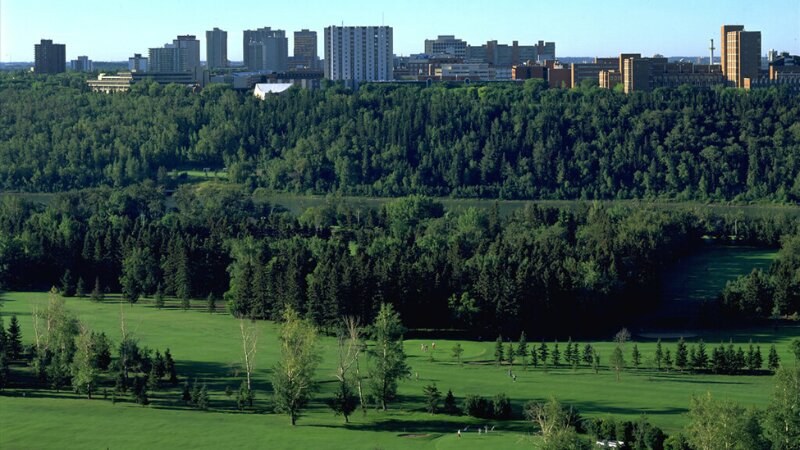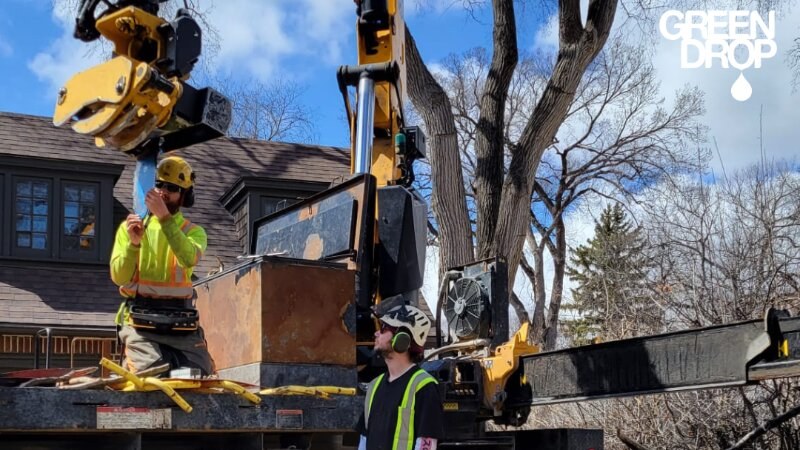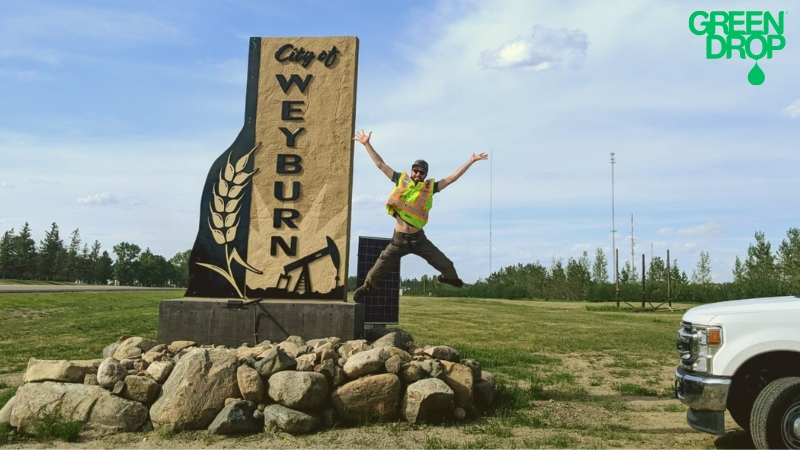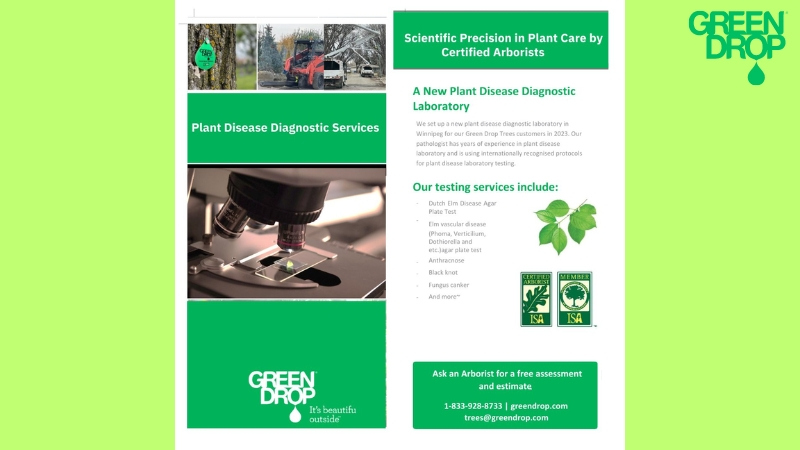Challenges Cities Faces with Tree Management in Alberta
Reading time: 5 minutesIn the heart of Alberta's bustling cities, urban forests stand as signs of environment and community well-being. These green canopies provide shade, clean air, help moderate the climate, and enhance urban biodiversity.
However, maintaining the health of these urban forests is no small feat. They face varied challenges, from relentless environmental threats and invasive pests to the spread of disease. Let's understand and navigate these obstacles to preserve the green essence of Alberta's urban landscapes.

Alberta’s Green Infrastructure
Alberta's urban forests aren’t just visually appealing but are as critical as the roads and buildings that define the cityscape.
Environmentally, they act as natural air filters, absorbing pollutants and emitting oxygen. They also play a crucial role in water management, reducing runoff and erosion through their thirsty roots.
Socially, urban trees offer a sanctuary for mental and physical health, encouraging outdoor activities and fostering community connections.
The management of these green resources, however, varies significantly across Alberta. Larger cities like Edmonton and Calgary have developed sophisticated urban forestry programs. These programs are backed by substantial funding, dedicated staff, and comprehensive policies to sustain and expand their green canopy.
Smaller communities like Grand Prairie, St. Albert, and Airdrie often struggle with the complexities of urban tree management. Limited by smaller budgets, fewer resources, and a lack of specialized knowledge, it’s challenging to maintain tree care programs.
Bridging this gap between larger cities and small communities is essential for the equitable growth and protection of urban forests throughout Alberta.
Core Challenges in Urban Tree Management
Environmental Stressors
Urban conditions impose significant stress on trees. Pollution, a constant in city environments, can damage trees at a cellular level. It impairs their ability to photosynthesize, making them more susceptible to disease and pest infestations.
Limited soil space is another critical issue, particularly in densely built areas where concrete and asphalt restrict root growth and limit water and nutrient absorption. This confinement stunts tree development, increases their vulnerability to environmental stresses, and reduces their lifespan.
Biological Threats
Alberta's urban forests are under siege from various biological threats that can cause widespread damage. Dutch Elm Disease, a fungal infection spread by the elm bark beetle, has devastated elm populations by obstructing the tree's water transport systems, leading to wilt and eventual death.
The Bronze Birch Borer, an invasive beetle, targets weakened birches, boring into their wood and disrupting nutrient flow, often resulting in the tree's demise. These diseases and pests can diminish the aesthetic and environmental value of urban forests while also posing significant removal and replacement costs.
Climate and Weather Challenges
Alberta's climate poses its own set of challenges to urban tree management. Harsh winters can damage tree tissues, making them more prone to disease and pest infestation in warmer months.
Moreover, sudden temperature fluctuations can cause stress cracks in trunks and branches, weakening the tree's structure. Storms, which are particularly severe in Alberta, can cause visible damage, such as broken branches and uprooted trees.

Policy, Support, and Resource Limitations
Financial and Political Hurdles
One of the biggest challenges to urban forestry is the lack of organization and funding.
Urban trees and green spaces need champions within local governments to advocate for their importance and secure the necessary resources for their care and expansion.
Lack of Public Awareness and Engagement
Public perception and involvement are pivotal to the success of urban tree management. However, fostering a deep sense of connection and responsibility toward urban forests among residents can be challenging.
Many people may not recognize the extensive benefits trees provide to urban environments or understand the critical need for their active participation in tree care and protection initiatives.
This lack of awareness often leads to indifference towards issues like tree planting, maintenance, and advocacy for more green spaces, making it difficult for municipalities to rally community support.
Resource and Knowledge Gaps
In addition to financial and political barriers, smaller municipalities often grapple with significant resource and knowledge gaps. Many lack dedicated forestry staff with the expertise required to manage an urban forest effectively.
This shortfall can lead to suboptimal care for urban trees, making them more susceptible to diseases, pests, and environmental stressors. Moreover, the absence of comprehensive tree care policies and bylaws leaves urban forests vulnerable to neglect and mismanagement.
Without clear guidelines and regulations, it's challenging to maintain the health of the urban canopy, let alone expand it.
We were happy to be in Weyburn, helping to better their urban forest by creating an inventory of all public trees!

Enhancing Urban Tree Care Through Municipal Services
Municipal tree care services (like ours) play a pivotal role in transforming the urban forestry landscape across Alberta’s cities and towns. These services provide a holistic approach to tree management and care by addressing the diverse challenges these communities face.
Tailored Management Solutions
At the heart of these services lies a commitment to comprehensive care, ranging from pest and disease management to specialized efforts in combating threats like Dutch Elm Disease. These programs are crucial for disease control and preserving the vitality of key species within the urban ecosystem.
Strategic Urban Forestry Planning
Beyond immediate threats, green spaces' strategic development and ongoing maintenance are fundamental. Urban Forestry Planning ensures urban forests' long-term resilience and expansion, balancing ecological health with urban development needs.
Expertise and Advanced Technology
It takes a blend of professional expertise and technological innovation. ISA-certified arborists and Master Arborists bring deep knowledge and dedication to tree health, employing cutting-edge technology for meticulous tree inventory and forest surveys. Such tools enable precise data collection and analysis, forming the basis for informed urban forestry decisions.
Comprehensive Care Approach
These services extend beyond mere maintenance, focusing on the proactive management of urban trees. This includes everything from initial assessments and routine care to emergency response and long-term planning. By leveraging expert knowledge and advanced technologies, Municipal Tree Care Services ensure that urban forests continue to thrive.

Strengthen Urban Forests Together with Green Drop
The longevity of Alberta's urban forests hinges on our collective ability to navigate and overcome the many challenges of municipal tree care. At Green Drop, we recognize this and extend an invitation to municipalities and community leaders to forge partnerships with us.
By collaborating with our professional municipal tree care services, you get tailored solutions that address the unique needs of your community's green spaces.
We encourage you to take the first step toward a thriving urban forest by scheduling a free tree care assessment. Together, we can ensure the growth and resilience of Alberta's urban canopies for generations to come. We currently offer our services in Red Deer, Calgary, and Edmonton, Alberta.

